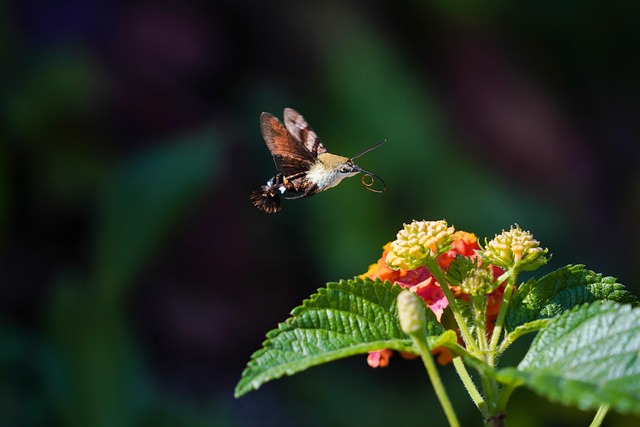The demand for eco-friendly pest control has led to the development of advanced, non-invasive inspection techniques. These include heat cameras, magnetic tracking, and robotic devices for various pests. Technologies like infrared sensors and GPR offer safe methods for detecting infestations, enhancing environmental protection in both residential (home) and commercial pest inspections. Modern tools such as Termite Detection Dogs, smart traps, and specialized lighting revolutionize pest detection, reducing the need for toxic chemicals. These innovative, eco-conscious practices prioritize health and sustainability, providing effective termite, rodent, bed bug, and ant control without causing environmental harm.
In today’s eco-conscious world, traditional pest inspection techniques often leave a significant environmental footprint. However, innovative eco-friendly tools and methods are transforming the industry. This article explores advanced technologies in pest detection, from heat sensors and cameras to non-toxic baits, showcasing how professional pest inspection services can now provide effective solutions with minimal disruption. We delve into specific infestations like termites, rodents, bed bugs, and ants, presenting natural solutions and case studies that prove ecological sustainability without compromising results. Additionally, we discuss strategies for efficient inspections, preparation tips, and future trends shaping the green pest inspection movement in both residential and commercial sectors.
Innovative Eco-Friendly Tools for Pest Inspection
In recent years, the demand for eco-friendly pest inspection techniques has surged as consumers and businesses alike become more conscious of environmental impact. Traditional pest control methods often rely on toxic chemicals that can have adverse effects on both the target pests and non-target organisms, including pets and beneficial insects. To address this concern, innovative tools and techniques are being developed to enhance pest infestation inspection services while minimising disruptions and environmental damage.
These cutting-edge solutions include advanced heat cameras for detecting rodents and termites, magnetic tracking systems for bed bugs, and even robotic devices capable of inspecting hard-to-reach areas. For instance, rodent infestation inspection can be accomplished using infrared sensors that detect the heat signatures of rodents, allowing professionals to pinpoint their presence without resorting to toxic traps. Similarly, termite inspection services benefit from ground-penetrating radar (GPR) technology, which non-invasively identifies termite tunnels and infestations. These eco-friendly pest detection services not only protect the environment but also ensure safer and healthier living or working spaces for everyone involved.
– Highlighting advanced technology used in professional pest inspection services
Professional pest inspection services have evolved significantly, incorporating advanced technology to offer eco-friendly and minimally disruptive solutions for various pest-related issues. Tools like Termite Detection Dogs (TDDs) are being used to identify termite infestations early on, with these trained canines capable of detecting even the subtlest of termite traces through their superior sense of smell. Moreover, remote sensing technologies such as infrared cameras and thermal imaging help in visualizing hidden pests or damage without causing any disturbance to properties or inhabitants.
In addition, innovative devices like smart traps and sensors are becoming increasingly popular. These devices can detect specific pests, send real-time alerts, and even differentiate between target insects and non-target species, minimizing the use of pesticides. For instance, bed bug inspection often employs heat detection methods and specialized lighting to uncover these elusive critters without the need for chemical treatments. Similarly, ant infestation inspections benefit from advanced tracking techniques that follow pheromone trails, providing effective control measures with reduced environmental impact.
– Discussion on how tools like heat sensors, cameras, and non-toxic baits reduce environmental impact
Advanced tools and techniques play a pivotal role in eco-friendly pest inspection services, ensuring minimal disruption to the environment during the detection process. Heat sensors, for instance, are highly effective in identifying pest activity by detecting temperature variations caused by the presence of living organisms, such as rodents or termites. This non-invasive method eliminates the need for chemical treatments and reduces the potential for ecological damage.
Cameras equipped with high-resolution imagery and zoom capabilities offer another environmentally conscious approach to pest inspection. Professional pest inspectors can remotely assess hard-to-reach areas without physically disturbing them, making it an ideal solution for both home and commercial pest detection services. Moreover, non-toxic baits are used as a safe alternative to toxic chemicals in ant infestation inspections or bed bug treatments, ensuring that no harmful substances contaminate the surrounding ecosystem during termite inspection services or rodent infestation inspections.
– Benefits of these techniques for both customers and the ecosystem
Eco-friendly inspection techniques offer a win-win solution for both customers and the environment. By adopting non-invasive and sustainable methods, pest infestation inspection services can effectively identify and mitigate issues like termite infestations, rodent problems, or bed bug outbreaks, without causing harm to people or the ecosystem. This approach is especially beneficial for home and commercial property owners who seek professional pest detection services that prioritize safety and environmental responsibility.
These techniques not only ensure a healthier living or working environment but also contribute to long-term sustainability. In the context of termite inspection services, eco-friendly methods may employ dogs trained to detect wood-eating insects or use non-toxic baits and traps. Similarly, for ant infestation inspections, natural repellents and biological controls can be utilized instead of harmful pesticides. Such practices not only minimize disruption but also promote biodiversity and preserve ecosystems, making them a responsible choice for those seeking comprehensive pest control solutions.
In today’s eco-conscious world, adopting sustainable practices in pest inspection is not just a trend but a necessity. By utilizing innovative tools like heat sensors, cameras, and non-toxic baits, professional pest inspection services can effectively detect and mitigate various infestations—from termites and rodents to bed bugs and ants—while minimizing environmental disruption. This approach ensures a healthier ecosystem and safer living or working spaces for all. Embracing these eco-friendly techniques is a significant step towards a more sustainable future in the pest control industry, catering to both residential and commercial pest infestation inspection services.
